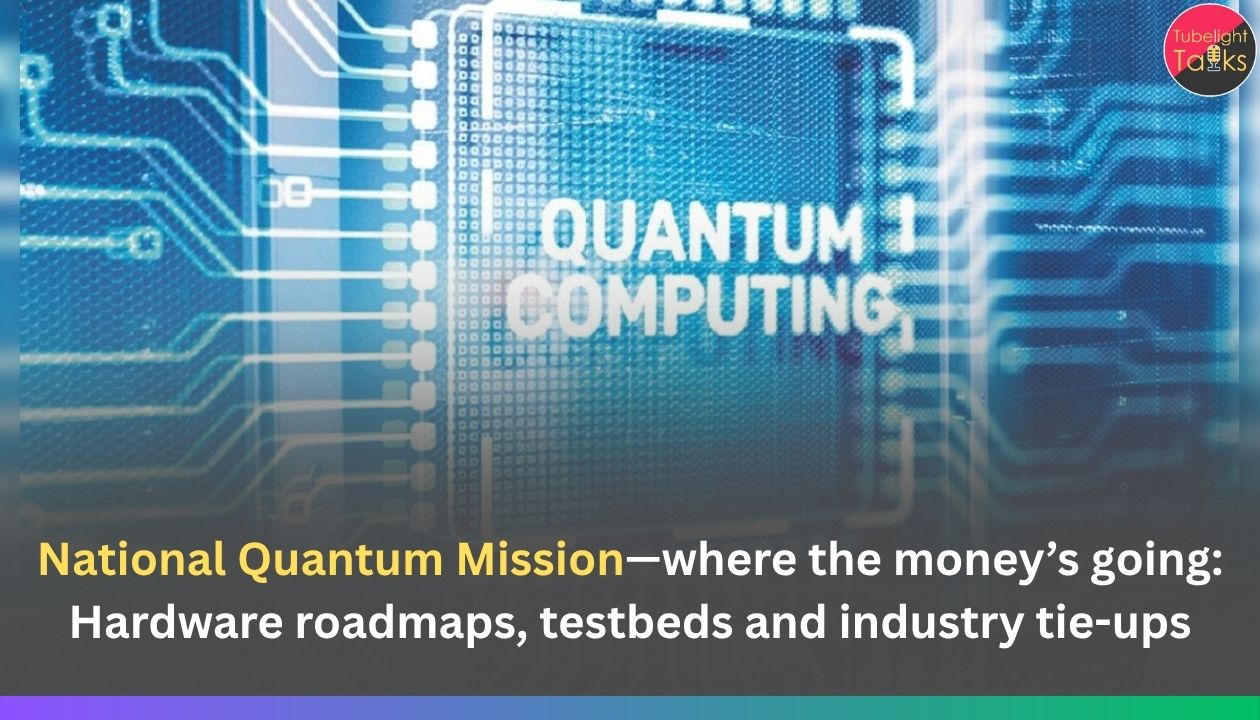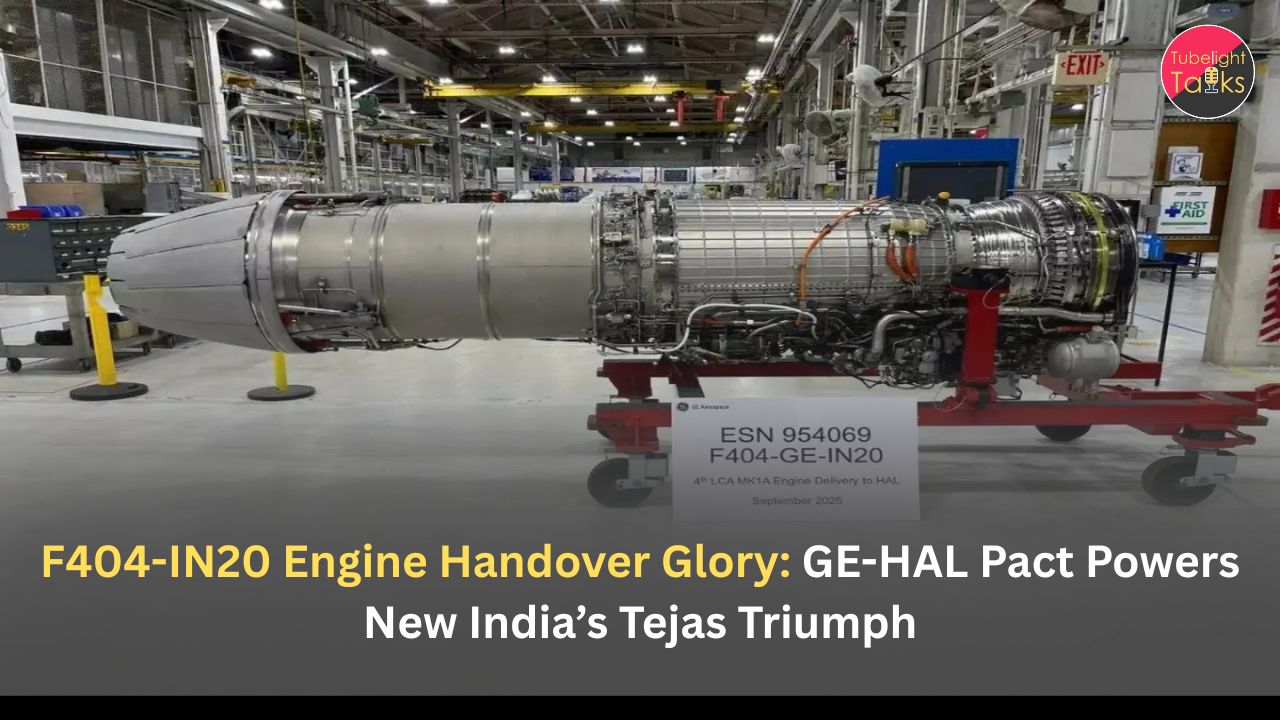India’s National Quantum Mission (NQM) is an eight-year programme with a total outlay of ₹6,003.65 crore (approved April 19, 2023) to push quantum computing, communication, sensing & metrology, and materials/devices from labs to pilots and products.
To deliver that, the government has created four Thematic Hubs (T-Hubs) hosted at leading institutions:
- Quantum Computing at IISc Bengaluru
- Quantum Communication at IIT Madras in association with C-DoT
- Quantum Sensing & Metrology at IIT Bombay
- Quantum Materials & Devices at IIT Delhi.
DST’s mission pages note that the hubs coordinate 14 technical groups spanning 17 states and 2 UTs, with 150+ researchers involved—an explicit attempt to make this national rather than city-centric.
Where the Money’s Going (programme pillars)
1) T-Hubs & research consortia: Core grants for multi-institution projects in the four pillars above, including hardware lines (superconducting, photonic, trapped-ion/neutral-atom), algorithms, and materials/devices.
2) Hardware roadmaps (time-boxed): NQM’s public roadmap targets 20–50 physical qubits in ~3 years, 50–100 in ~5, and 50–1000 in ~8 years across platforms, plus enabling stack (cryo-electronics, control, error mitigation).
3) Quantum communication networks: Two big deliverables—2,000-km inter-city QKD on fiber (trusted nodes, WDM) and a satellite-enabled quantum link over ~2,000 km between two ground stations, extendable internationally.
4) Testbeds & standards: Field demonstrators in QKD (fiber/free-space), sensing & metrology (magnetometers, quantum clocks, diamond microscopes), and reference docs (QRNG/PQC standards).
5) Startup & industry grants: Calls for proposals (including quantum algorithms) and startup-support lines are live via DST; the hubs also run challenge grants and onboarding into national testbeds.
Hardware Roadmaps: What “20–50–100–1000” Actually Means
- Compute: Build intermediate-scale systems first (20–50 qubits), mature to 50–100 qubits, and, over the mission, push toward few-hundred to ~1000 qubits—not just by adding qubits, but by improving gate fidelity, coherence, error mitigation, and the electronics/cryogenics stack.
- Comms: On fiber, the target is operational QKD networks with trusted nodes/WDM; in space, a satellite-to-ground quantum link to prove long-distance resilience and move toward a quantum internet backbone.
- Sense & time: The Cabinet note explicitly mentions high-sensitivity magnetometers and atomic clocks for precision timing, navigation and secure communications—dual-use tech with civilian and strategic value.
Testbeds & Early Wins: What’s Already Happened
- 500-km QKD network demo: Startup QNu Labs (supported under NQM/DST) publicly demonstrated India’s first extensive 500-km QKD over optical fiber with the Indian Army’s Southern Command providing testbed access.
- Navy deployments: DST notes 25 QKD systems delivered to the Indian Navy in 2024, showing early operational appetite for quantum-safe links.
- Fiber + free-space integration: C-DOT & PRL showed inter-working of fiber QKD with free-space QKD—a building block for mixed terrestrial/air/space networks; C-DOT has also pursued drone-based QKD with industry.
- Sensing hub kick-off: IIT Bombay’s QMet hub mapped a pathway including portable magnetometers and quantum diamond microscopes toward deployable instruments.
Industry & Academia: Who’s Plugged In
- IBM–IIT Madras: IIT-M is India’s first IBM Quantum Network node, giving researchers cloud access to IBM hardware; Indian IT firms are joining the network (e.g., LTIMindtree) to build apps and tools.
- Startups: QNu Labs anchors secure-comm deployments; media also report indigenous processor efforts (e.g., QpiAI’s “Kaveri 64” roadmap), reflecting a budding hardware scene around the hubs.
- Lab networks: IISc/IITs/IISERs run courses, camps and hackathons to seed talent into the hubs and testbeds.
2026 Watch-List: What to Track Next
- City-pair QKD pilots chaining up toward 2,000 km on existing fiber with trusted nodes/WDM.
- Satellite-ground quantum link demo between two Indian stations (follow-on to fiber wins).
- 20–50-qubit systems exposed via cloud to universities/startups for algorithm and error-mitigation trials.
- Metrology devices (magnetometers/atomic clocks/diamond microscopes) moving from lab to field pilots via the IIT-B hub.
- Standards & policy: QRNG, PQC migration, and quantum-secure 5G core tech notes turning into operator/vendor trials.
Designing for Responsibility
A resilient quantum stack isn’t just a tech challenge; it’s an ethical one. Sant Rampal Ji Maharaj practical compass of truthfulness, non-harm, service and restraint translates into: transparent benchmarks, privacy-by-design in QKD/pqc roll-outs, energy-aware lab/cluster operations, and open-interface choices that keep access affordable for smaller universities and startups. These choices ensure the mission lifts people along with performance.
The Road Ahead: From Grants to Ground Truth
If 2024–25 built the scaffolding—T-Hubs, standards, and seed testbeds—then 2026 must deliver working demos with public KPIs: qubit counts with fidelity targets, QKD uptime across monsoons and maintenance cycles, Joules-per-key/bit, and Indian IP entering standards tracks.
Aligning funds to these measurable milestones will turn NQM from a budget line into a trusted capability—computers you can program, links you can secure, clocks you can navigate by. Do that, and by 2027–28, India won’t just be catching up; it will be co-writing the quantum playbook.
Also Read: RDI Fund Explained: Where India’s ₹1 Lakh Crore for Research, Development & Innovation Will Go
FAQs: National Quantum Mission
1) What are NQM’s headline targets for hardware?
To build intermediate-scale quantum computers at 20–50 qubits (~3 yrs), 50–100 qubits (~5 yrs) and push toward 50–1000 qubits (~8 yrs) across platforms like superconducting and photonic.
2) Which institutions host the four T-Hubs?
IISc Bengaluru (Computing), IIT-Madras with C-DoT (Communication), IIT-Bombay (Sensing & Metrology), and IIT-Delhi (Materials & Devices).
3) What exactly is the 2,000-km communication goal?
Twofold: inter-city QKD over ~2,000 km on fiber using trusted nodes/WDM, and a satellite-enabled quantum link over ~2,000 km between ground stations in India (extendable to other countries).
4) What progress has industry/startups shown so far?
QNu Labs demoed a 500-km QKD network with Army support and delivered 25 QKD systems to the Navy; academia–industry links include IBM–IIT Madras and LTIMindtree joining IBM’s quantum network.
5) How big is the Mission and who funds it?
NQM runs for 8 years with ₹6,003.65 crore; it’s implemented by DST through the T-Hubs, grants, and national testbeds/standards work.
Key references (official): Cabinet approval & aims; detailed qubit/QKD/satellite targets; T-Hub hosts & progress updates; QKD demos and standards notes.










